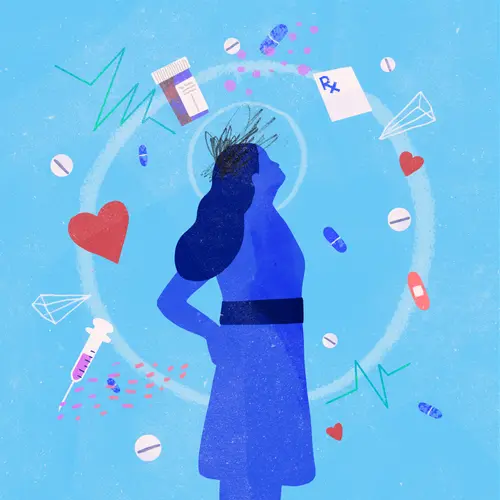Your doctor wants you on a CPAP machine to help your sleep apnea. You might worry you’ll be tied to a noisy gadget all night with tubes there, a mask here, and straps going every which way.
It can seem overwhelming, says David Rapoport, MD, the director of research at the NYU Sleep Disorders Center.
“We work very hard to try to get people to be more open to the idea,” he says. “What’s remarkable is, when they try it, they often say, ‘That’s not so bad.’”
There may be some hurdles at first, but they don’t have to be deal-breakers. Once you know what to do, you can sleep well with a CPAP machine.
Get to Know Your Gear
When you have sleep apnea, you can stop breathing, briefly, up to 30 times or more an hour when your airways close or get blocked. CPAP, short for continuous positive airway pressure, pushes air into them to keep them open.
The machine has a pump that controls the airflow, a tube that carries the air from the machine to you, and a mask that goes over your mouth, nose, or both.
Some things about it may take some getting used to:
Masks and straps: If you’ve never slept with something on your face, it’ll probably take some time for you to wear the CPAP mask without thinking about it.
Most modern ones fall in one of three groups:
- A nasal mask that goes over your nose
- A "nasal pillow mask" that fits under your nose
- A full mask, which covers your mouth and nose
Among those three main types, there are kinds including:
- Full-face masks that go over your eyes as well
- Nose masks with prongs that go into your nose
As long as the mask is sealed enough so that the air pressure from the tube stays constant, the CPAP will do its job. It’s up to you to find out which type is most comfortable on your face, and which straps are best to hold it in place. You may have to try a few different types before you find one you like.
Your doctor and sleep specialist can help you make sure everything works and fits as it should.
“It’s like wearing shoes. You buy a new pair of shoes, they’re initially going to chafe or hurt you. Or a new pair of glasses -- you become very conscious of them,” says Sairam Parthasarathy, MD, medical director of the Center for Sleep Disorders at the University of Arizona. “But after a while, it becomes second nature. You put it on without thinking.”
Noise: In the old days, CPAP machines were clunky and loud. Instead of a whoosh, it was more of a WHOOSH. Some made metallic, clicking sounds.
But that was then. Machines today are smaller, quieter, and much less noticeable. Many brands are near-silent. That’s a bonus not only to CPAP users, but to their bed partners too.
Pressure: Machines have different air pressure settings. Some of them vary it depending on whether you’re inhaling or exhaling. Your doctor will help you figure out the level that’s comfortable for you and helps you the most.
Dryness: Some CPAP users say all that forced air dries out the nose and mouth. Many machines have humidifiers to fix that. Some even heat the moist air.
Trouble breathing through your nose: If you feel stuffed up from allergies, sinus problems, or a physical issue with your nose, you may have trouble using a CPAP machine. But the problem usually goes away when you treat your congestion, whether with medicine, allergy treatments, or sometimes surgery.
“A lot of people have nasal obstruction or congestion and they don’t even know it.” Parthasarathy says. Treatment for those problems makes CPAP work much better for them.
Learning to Appreciate CPAP
For most people, these devices are the best way to treat obstructive sleep apnea. The challenge for doctors and sleep specialists is to convince the wary that they’re better off with one than without it.
Aside from poor Zzz’s, though, people who don’t get treatment for the problem face a higher risk of heart attacks, strokes, high blood pressure, and other health problems.
But most of the time, Rapoport says he tells his patients they can’t knock CPAP until they’ve tried it.
“I would tell people, ‘Try it. Use it part of the time. Let’s get you to the point where you see the benefits. You don’t have to believe me. You’ll see it,’” he says.
Parthasarathy says many of the people he points toward CPAP do see the benefits, some more quickly than they imagined.
“I had a patient tell me that he felt like he walked across a desert and finally found water,” he says. “I get comments like, ‘This is the best night’s sleep I’ve had in a long, long time.’ Or, ‘I have dreams now. And it’s been a long time since I remember having a dream.’”

